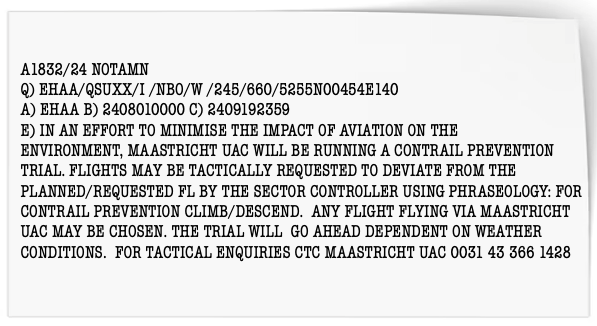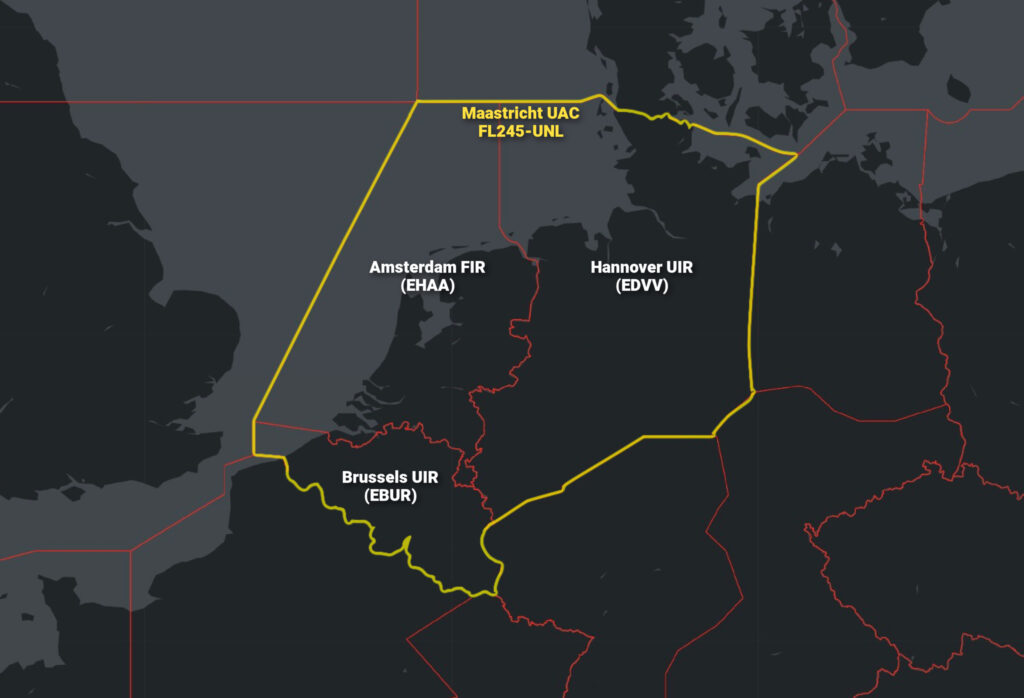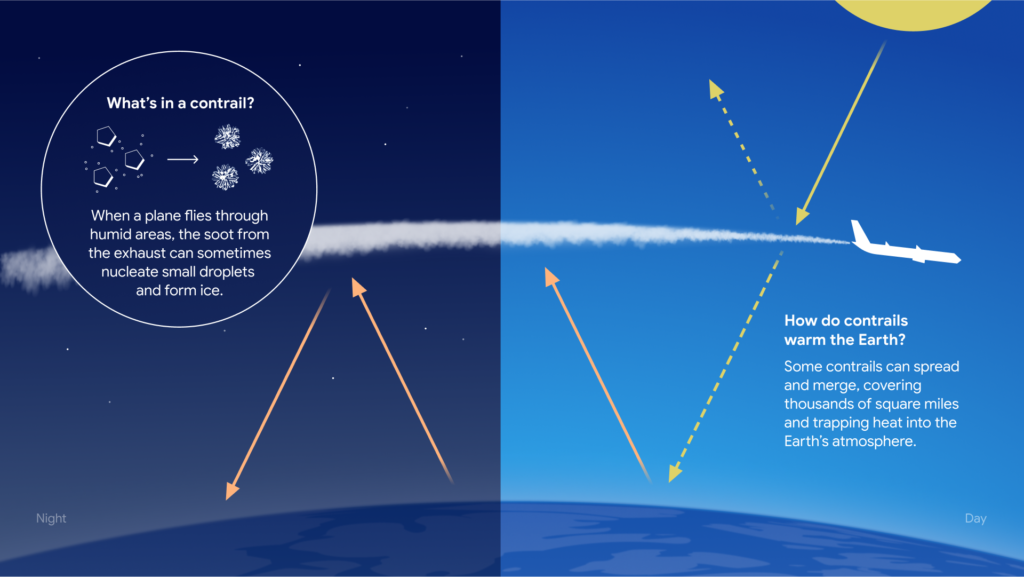A few weeks back, the following Notam was issued for the Maastricht UAC (i.e. the busy airspace above FL 245 over Belgium, the Netherlands and Luxembourg):

Essentially if you are flying through that airspace between now and September 19 you may be instructed to climb or descend using the phrase ‘for contrail prevention.’

Maastricht have teamed up with DLR (the German Aerospace Center) in a bid to lower aviation’s ‘non-CO2’ climate impact. In other words, the effect aviation is having on the environment beyond fossil fuel emissions.
In that sense, this trial is one-of-a-kind and has been running on-and-off since 2021.
If you’re wondering why you’re being asked to deviate from your desired level, and what that has to do with contrails, read on.
What does any of this have to do with contrails?
The concept of non-CO2 impacts may be less familiar to operators. Non-CO2 effects have to do with complex interactions between aircraft emissions and their effect on the surrounding atmosphere.
This includes soot particles – a byproduct of combustion. It may come as a surprise that contrails are not (as is often misrepresented) just water vapor. When water vapor exits the exhaust nozzle of a jet engine, it condenses and freezes to these soot particles creating tiny ice crystals.
These crystals form contrails. They are in fact a type of cirrus cloud with a fancy name that sounds like a bad cold – homogenitus. And if conditions are right, they can persist for hours – long after the aircraft that created them has disappeared over the horizon.
At night in busy airspace (such as the Maastricht UAC) these contrails can have a warming effect by trapping heat in the atmosphere, just like naturally occurring clouds.

This process occurs across quite a shallow band – around FL300 in Winter and FL360 in Summer.
So, contrails are important. Why do I need to change levels?
The strength and persistence of contrails has a lot to do with the state of the atmosphere around them. Part of the industry’s approach is predicting when the atmosphere is favourable to form contrails and making small flight path adjustments to avoid the worst of those conditions.
Enter the Maastricht UAC Contrail Prevention Project.
Covering your tracks
The airspace of Maastricht often experiences conditions favorable for the formation of contrails. Therefore, it is the ideal testbed for the trial.
The project focuses on identifying those conditions and preventing prolonged level flight through them. In a nutshell, the German Aerospace Center identify when conditions in the Maastricht UAC are favorable for the formation of contrails by looking at satellite data.
Taking predicted traffic levels into account, the duty supervisor then gives the thumbs up for controllers to conduct ‘contrail prevention activity.’
If it goes ahead, it will begin after 4pm local and run through the night until 6am local.
Affected aircraft will be directed by air traffic control to change flight level using the phrase ‘for contrail prevention.’
What about fuel burn?
EUROCONTROL advise that ATC will only request the minimum level change required – i.e. will keep you as close as possible to you chosen level as conditions permit.
Anyone operating in Maastricht airspace may be selected to participate in this trial. It is important to inform the controller if the level change will affect flight safety for which all levels will remain available.
More on the topic:
- More: Contrails, Chemtrails and Climate Change
- More: Most GA/BA aircraft now exempt from Europe’s 2020 Datalink Mandate
- More: Midweek Briefing 06JUL: Hong Kong capacity problems, Iceland: The fun continues
More reading:
- Latest: Mexico Customs Surprises: Pills, Vapes, and Laptop Rules
- Latest: Greenland NAT Alternates: Dec 2025 Update
- Latest: Crossing the Quiet South: From Australia to Argentina
- Safe Airspace: Risk Database
- Weekly Ops Bulletin: Subscribe
- Membership plans: Why join OPSGROUP?











 Get the famous weekly
Get the famous weekly 






Unable
Unable, indeed.
Short & sweet.
If you need more context on the ATC decision you can use in-flight tools like Loretta. This can raise you attention on contrail avoidance before you enter Maastricht UAC, and it gives you the cost on the change ATC is asking you to execute.
“Unable”
Pls check Hannover UIR Code,
looks incorrect code.
Thanks Khalid, corrected now!